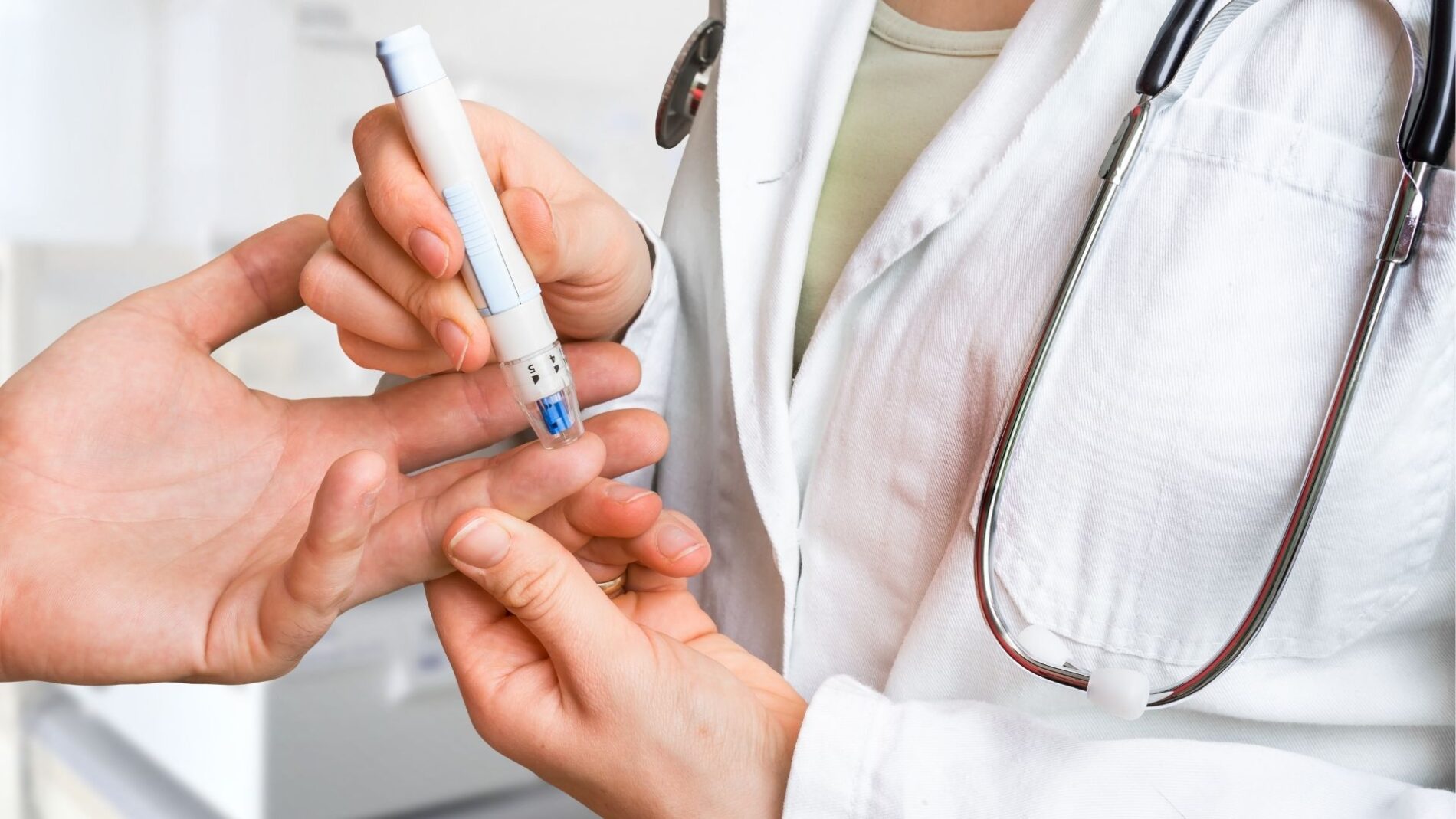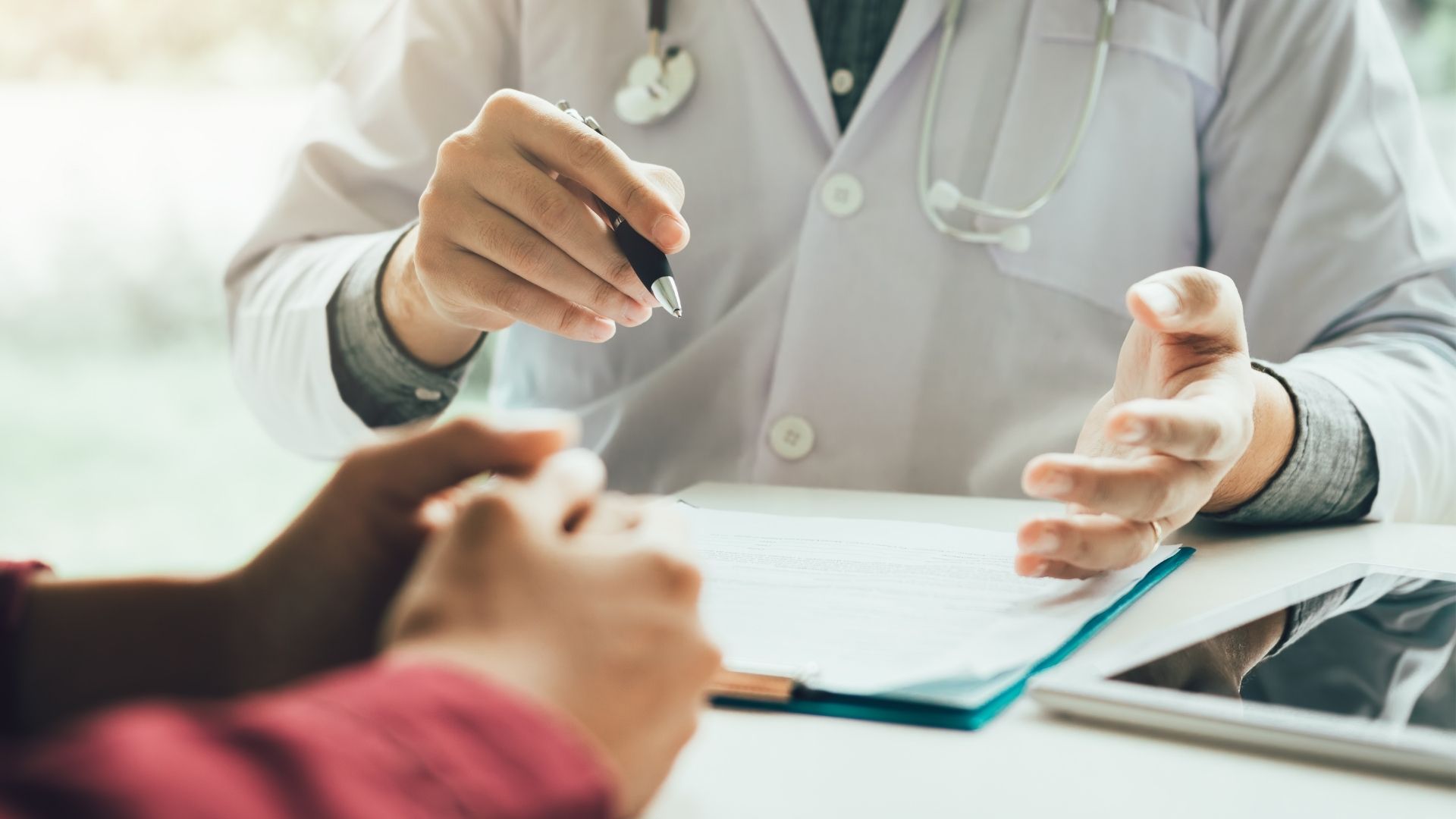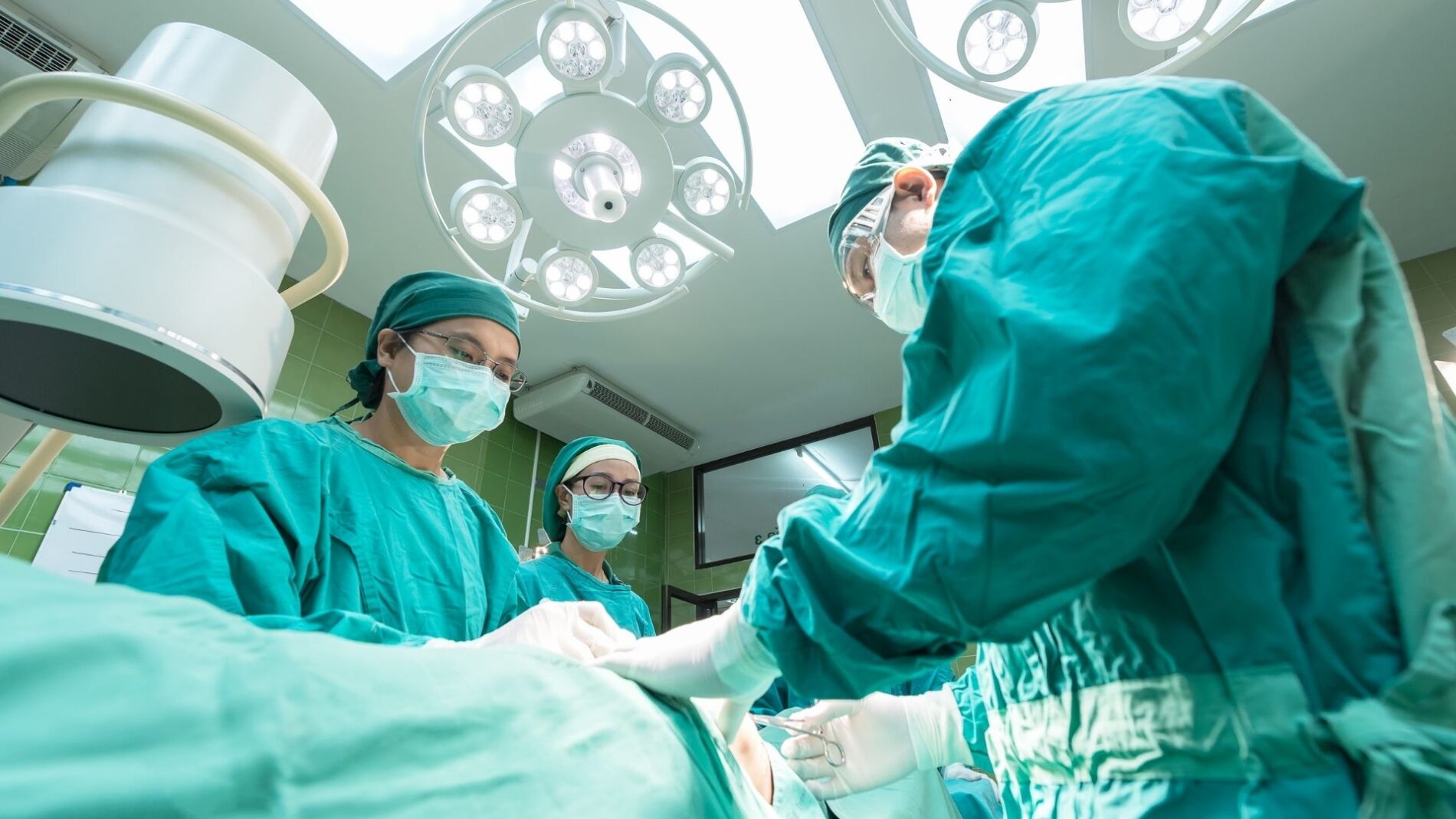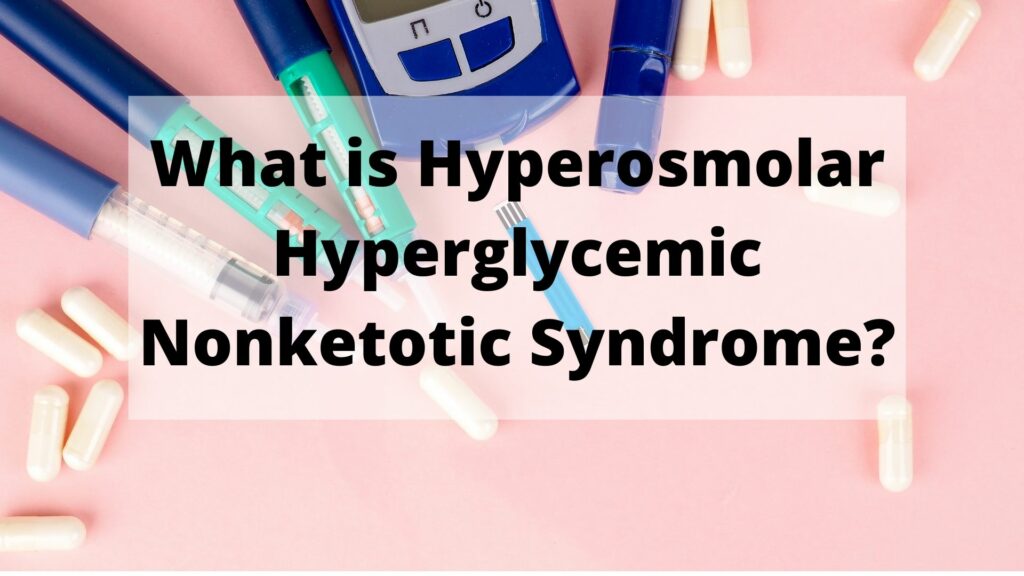Hyperosmolar hyperglycemic nonketotic syndrome, or HONKS for short, is a type of hyperglycemia that occurs when the blood sugar levels are so high they can’t be in control with insulin. It typically affects individuals who have Type 2 diabetes and renal disease. Although it is rare, the hyperosmolar hyperglycemic nonketotic syndrome can also occur in people without either condition. These hyperglycemia symptoms include increased thirst, blurred vision, confusion or drowsiness, vomiting, and diarrhea. If left untreated this disorder could lead to coma or death.
The first step to treating hyperosmolar hyperglycemic nonketotic syndrome is increasing your fluid intake as much as possible.
Contents
- 1 What is Hyperosmolar Hyperglycemic Nonketotic Syndrome
- 2 Diabetes and HHNS
- 3 Symptoms
- 4 When to Seek a Doctor
- 5 Causes of Hyperosmolar Hyperglycemic Nonketotic Syndrome
- 6 Diagnosis of the Hyperosmolar Hyperglycemic Nonketotic Syndrome
- 7 Treatment of Hyperosmolar Hyperglycemic Nonketotic Syndrome
- 8 Side Effects of Treatment
- 9 Complications with Hyperosmolar Hyperglycemic Syndrome (HHS)
- 10 Prevention
- 11 Conclusion
What is Hyperosmolar Hyperglycemic Nonketotic Syndrome
The hyperosmolar hyperglycemic nonketotic syndrome is a life-threatening condition that occurs when blood sugar levels are extremely high. High glucose causes the blood to become hyperosmolar, meaning it has a higher than normal amount of solutes such as sodium and glucose. This is the opposite of hyperosmolality (low blood sugar levels), which can be in severe insulin reactions (hypoglycemia).
When there is hyperglycemia without ketoacidosis, this is a hyperosmolar hyperglycemic nonketotic syndrome.
The hyperosmolar hyperglycemic syndrome is also known by a variety of names, including:
- Diabetic HHS.
- Diabetic hyperosmolar syndrome.
- Hyperglycemic hyperosmolar nonketotic coma (HHNK).
- (HHNS) Hyperosmolar hyperglycemic nonketotic syndrome
- Hyperosmolar coma.
- Hyperosmolar hyperglycemic state.
- Nonketotic hyperosmolar syndrome (NKHS).
Some also refer to this as a “diabetic coma.”
Diabetes and HHNS

HHNS can affect both type 1 and type 2 diabetics, although it is most common among persons with type 2 diabetes. HHNS is generally by an illness or infection.
Your body releases excess blood sugar through your urine in diabetic hyperosmolar syndrome, which it attempts to get rid of by excreting it. If you don’t drink liquid daily, your urine loses moisture. As a result, the color of the liquid changes over time. If you don’t drink enough water, dehydration can occur, and this might get worse and cause coma, seizures, or even death.
The diabetic hyperosmolar syndrome can be deadly if not treated promptly. Medical care is in need right away.
This happens when the nerves that supply blood to your legs have a blockage. It’s a very serious problem, with about one in every 1,000 people experiencing it each year. The prevalence of this condition is much greater among those who haven’t been diagnosed with diabetes for an extended period (37%). Because the symptoms resemble others caused by nerve damage, it is difficult for doctors to determine which patients are suffering from hyperglycemic neuropathy.
Symptoms
Symptoms of the hyperosmolar hyperglycemic nonketotic syndrome can vary from patient to patient. Some symptoms may include but are not in the limit to:
- Extreme thirst
- Frequent urination (and increased volume),
- Unusual weight loss despite an increase in appetite,
- Fatigue and weakness.
If left unchecked or undiagnosed for too long hyperosmolar hyperglycemic nonketotic syndrome can lead to a loss of consciousness.
If you believe someone is suffering from hyperosmolar hyperglycemic nonketotic syndrome they must receive medical attention as soon as possible. In some cases, the hyperosmolar hyperglycemic nonketotic syndrome may be mistaken for the hyperglycemic hyperosmolar state.
It might take days or weeks to manifest. The following are additional symptoms that may indicate an infection:
- A fasting blood sugar level of 600 mg/dL or more, known as hyperglycemia, is an indication of the disease.
- Dry mouth
- Warm, dry skin
- Fever
- Drowsiness, confusion
- Hallucinations
- Vision loss
- Convulsions
- Coma
When to Seek a Doctor

If hyperosmolar hyperglycemic nonketotic syndrome symptoms last for more than 48 hours, you should immediately contact your doctor. This is because the hyperosmolar hyperglycemic nonketotic syndrome can be a sign of diabetes and if left untreated, this could lead to diabetic ketoacidosis or even coma which needs immediate medical attention.
If you have any of the following symptoms, go to an emergency room immediately:
- Your doctor has ordered medication to help you lower your blood sugar level. Despite following your doctor’s instructions for therapy, your blood sugar levels remain above 400 mg/dL (22.2 mmol/L) and do not improve. Don’t wait until your blood sugar level reaches dangerous levels of diabetes hyperosmolar syndrome.
- You’re experiencing blurred vision, dehydration, or other indications of confusion.
Causes of Hyperosmolar Hyperglycemic Nonketotic Syndrome
In some cases, the hyperosmolar hyperglycemic nonketotic syndrome may be in connection to a hyperosmolar hyperglycemic state.
The hyperosmolar hyperglycemic nonketotic syndrome is a type of hyperglycemia, which occurs when the body has high blood sugar levels from not producing enough insulin or from having too much glucose in the blood that’s unable to enter the cells due to insulin resistance.
Hyperglycemia, which occurs when a person’s blood sugar levels become excessively high (hyperglycemia), is one type of diabetic ketoacidosis. The additional sugar is excreted through the urine, causing the patient to urinate frequently. As a result, he or she loses a lot of fluid, which can lead to serious dehydration, especially if the hyperglycemic hyperosmolar nonketotic syndrome occurs in a hot environment.
Type 2 diabetes is more common in individuals who do not have their condition under control. They include people who do not manage their diabetes effectively, usually due to a lack of knowledge or resources.
Other causes may include –
- If you have an illness or infection like pneumonia or a urinary tract infection.
- Stop taking or reducing the intake of medication to manage their diabetes.
- If you have a heart attack or a stroke, consult your doctor immediately.
- Take medicines that might induce the condition, such as steroids or diuretics.
HHNS is more likely to affect older people, particularly those of African-American, Native American, or Hispanic descent. HHNS can occasionally occur in persons who have not yet been diagnosed with diabetes.
The hyperosmolar hyperglycemic nonketotic syndrome is more common in older adults and those with type II diabetes, however, it can affect people of any age or background.
With prompt diagnosis and treatment, the hyperosmolar hyperglycemic nonketotic syndrome has an excellent prognosis for a full recovery.
Diagnosis of the Hyperosmolar Hyperglycemic Nonketotic Syndrome

HMSN is identified by examining symptoms and measuring blood sugar levels, which can be done via a finger prick.
The most common symptoms of HHNS include continuing fatigue, an inability to concentrate, and inexplicable sleepiness. A blood glucose level of 600 mg/dL and low ketone levels are the main indicators of HHNS.
In the case of hyperemesis gravidarum, a test serum osmolality is in use to diagnose it. Serum osmolality examines ions dissolved in blood’s liquid portion (serum), such as sodium, chloride, bicarbonate, proteins, and glucose. A sample of blood is drawn from a vein using a needle and a syringe, which is then analyzed by an osmometer.
A hyperosmolar hyperglycemic state may be diagnosed based on the results of physical examinations that check for signs such as high blood sugar levels, low ketone production in the liver, dehydration caused by excessive water loss through urination, or vomiting, rapid breathing, and a high pulse.
Treatment of Hyperosmolar Hyperglycemic Nonketotic Syndrome
The treatment for HHNS includes –
- fluids or IV infusion
- insulin to manage blood sugar levels
- potassium replacement if the body is not able to maintain adequate amounts of this mineral in the bloodstream. This can be done by taking oral supplements, intravenous infusions, or injections. Some patients may require a hypertonic saline solution to help replace lost fluids.
- other treatments will depend on the underlying cause of the hyperosmolar hyperglycemic nonketotic syndrome,
- though it is commonly associated with type II diabetes and metabolic disorders.
Side Effects of Treatment
The IV electrolytes or fluids used to deal with dehydration do not cause any problems. Insulin-induced side effects include:
- Hypoglycemia (low blood sugar).
- Swelling of the arms and legs.
- Weight gain.
If your blood sugar falls too low while you are in the hospital, your doctor will treat you for hypoglycemia.
Complications with Hyperosmolar Hyperglycemic Syndrome (HHS)

HHS is a potentially fatal illness. It can lead to the following if not treated:
- Seizures.
- Coma.
- Swelling of the brain.
- Organ failure.
- Death.
How to Relieve Symptoms
One can –
- Seek medical attention as soon as possible.
- Do not drink any liquids if you cannot keep them down and do not eat anything until hyperosmolar hyperglycemic nonketotic syndrome (HHS) is in resolve.
ve. - Keep your blood sugar levels stable with insulin or hyperosmolar hyperglycemic nonketotic syndrome (HHS) medications.
- If the hyperosmolar hyperglycemic nonketotic syndrome (HHS) is caused by infection. The doctor may prescribe antibiotics to treat it.
Take steps to prevent hyperosmolar hyperglycemic nonketotic syndrome (HHS). Follow your doctor’s instructions on how much sugar you should eat and drink.
Prevention
The hyperosmolar hyperglycemic syndrome is a disorder that can be treated and prevented. If your blood glucose levels are not well in control, you may have an increased risk of developing hyperosmolar hyperglycemic syndrome. With good control, the chances of getting hyperosmolar hyperglycemic non-ketotic syndrome will decrease significantly.
Following a healthy lifestyle and controlling your diabetes are the greatest methods to avoid HHS. You should:
- Check your blood sugar frequently to make sure you’re staying within your target range.
- Take your insulin and other diabetes medications as directed by your doctor.
Follow a healthy diet – The American Diabetes Association offers a simple method of meal planning. In essence, it focuses on eating more vegetables. Follow these steps when preparing your plate:
- Fill half of your plate with nonstarchy vegetables, such as spinach, carrots, and tomatoes.
- Take a quarter of your plate with protein, such as tuna, lean pork, or chicken.
- Fill the last quarter with a whole-grain item, such as brown rice, or a starchy vegetable, such as green peas.
- Include “good” fats such as nuts or avocados in small amounts.
- Add a serving of fruit or dairy and a drink of water or unsweetened tea or coffee.
- Never drink alcohol on an empty stomach.
- Get more rest and check your blood sugar more often when you are sick.
- Know the symptoms of HHS and get help right away if you have any of them.
Outlook for Patients
The prospects for individuals who have HHS are largely determined by their age, general health, and the severity of the sickness. Up to 20% of people with HHS die from it.
If you’ve had HHS, you’ll need to work closely with your doctor once you’ve recovered from the illness. You may reduce your chances of getting HHS again by controlling your diabetes and maintaining a healthy diet and lifestyle.
How Is HHNS Different From Diabetic Ketoacidosis (DKA)?
DKA, like HHNS, is a severe condition that can be life-threatening if left untreated. DKA is merely a disease usually in people with type 1 diabetes, unlike HHNS.
Without insulin, glucose builds up in the blood and cannot get into the cells to utilize for energy. The body adapts by searching for an alternative energy source in stored fat. When stored fat is used as a source of energy, it produces ketones, which can harm the body.
The presence of ketones in the blood is one of the most reliable and objective indicators used to diagnose diabetes. There are two types: continuous and intermittent, with DHTNS not causing ketones and distinct symptoms of DKA, including:
- Breath that has a fruity odor
- Labored breathing
- Nausea and vomiting
- A rapid and weak pulse
- Abdominal pain
Conclusion
The hyperosmolar hyperglycemic nonketotic syndrome is a condition that occurs when too much sugar enters the body. It can lead to diabetic ketoacidosis if left untreated, so it’s important for anyone who has diabetes or potential risk factors for developing type 2 diabetes (such as obesity) to know about this rare but dangerous disease. If you think you may be at risk of HHHNS, call your doctor right away! They will want to assess your blood sugar levels and give you intravenous fluids before they send you home with more instructions on managing your glucose intake to avoid another episode like this one. When people are diagnosed early enough after an episode of HHHNS, their chances of avoiding long-term health problems are greatly increased.
The hyperosmolar hyperglycemic nonketotic syndrome is a life-threatening condition that can be prevented with early diagnosis and treatment.
Do you want to get rid of diabetes? Join our online diabetes consultation program and reverse your Diabetes naturally through lifestyle changes such as a Personalized Diet plan, Exercise, dieticians, and health coaches.


